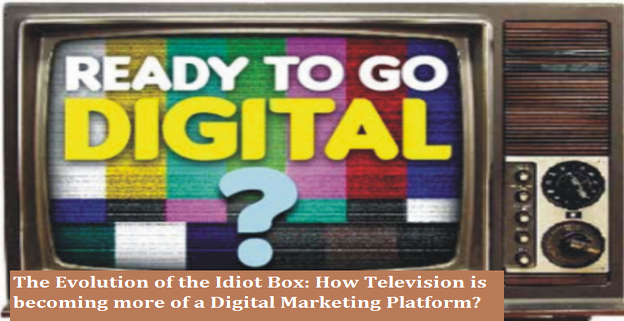The way TV viewership is shifting online to extravagant services & linked devices; there is the need for the audience measurement models to evolve. The marketing gurus across the world are exploring on how the census based data furnished from the digital channels when pooled with the TV panel-based ratings can empower the marketers in understanding the ad’s effectiveness in detail.
It’s not just the story about the U.S. as to how viewers are relying more & more on connected TV devices such as Chromecast and extravagant services like Hulu apart from the smartphones & personal computers or laptops for watching their favorite shows & videos. What I am observing these days that of course the Indian inhabitants are still consuming video via cable or over-the-air apart from anyway turning to various devices such as PCs, tablets, & smartphones while searching for more information on the program that’s already on or communicating and researching an advertised product or service, TV consumption even in India is becoming more of a digital video experience. And! It is all attributed to the shift that has taken place to TV, which is now being delivered via the internet and across multiple devices, in addition to the time-honored way it used to be delivered. Now, with the shift that has happened to the idiot box i.e. our most amicable television, marketers are getting hold of the substantial amounts of actionable data it offers and that they must work towards the evolution of panel-based TV ratings and the Gross Ratings Point (GRP) to a hybrid panel-plus-census model for integrating a number of strong points coming with the digital viewership. I don’t think I need to tell you how the panel-based measurement and the GRP will anyway be providing crucial color & context to the overall picture of the viewer. However, with the advertisers & programmers gaining access to a more targeted reach as well as frequency data, the prominence on these approaches will start fading away. And! Something that will gain grounds and remain important will be the all-so-impact-focused census-based measurement. Just like the way digital video ads are measured with much more grainy detail & certainty, measurement of the effectiveness of a TV ad will be approached, in order to empower the advertisers as well as the content owners with a clubbed view of their audiences from across multiple screens. I mean things would almost be same! Understanding the effectiveness of an ad in driving traffic, brand awareness, purchase intent, brand favorability & loyalty and of course the conversions will become easier for marketers with the introduction of digital census data & programmatic ad-buying competence. In fact, they could do it quite faster than it was ever possible on TV.Ultimately, figuring out who’s watching and when will become all-so-easier for the broadcasters & advertisers helping them in determining the impact of an ad or a program on individual viewers. Obviously, this will enable the marketers in customizing more personal ad experiences. On top of it, easy access to the real-time data anywhere and everywhere will help marketers in optimizing their campaigns even when they are on their go.







Gaurav Heera
Its main goal is to help, inform, inspire and entertain. Content marketing shouldn’t be pushy or look like direct sales. The key to success is to create excellent contents that help your potential customers to achieve their goals and wishes; at the same time, it connects them to your brand in a meaningful way that is easy to remember.